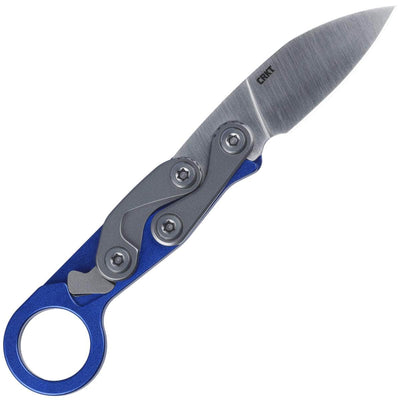Your cart is empty.
History of Karambit Knives

The curved design of the Karambit makes it one of the most distinctive and recognizable knives of modern days. These claw-like hand-held knives are popular for their practical uses as well as their use as a self-defense weapon, especially in Southeast Asian martial arts.
Karambit knives have been adapted and modified over the years to become the fighting knife that’s used today. But where exactly did Karambit knives originate from and what was the initial use for a Karambit?
Origins of Karambit Knives
Karambit knives are thought to have been around for thousands of years. Most notably, their origins can certainly be traced back to the 11th century.
They were first made by the Minangkabau people found in the West Sumatra region of Indonesia. Thanks to the country’s booming trading network, Karambit knives quickly spread to other parts of Southeast Asia.
Different cultures throughout the region that includes modern-day Laos, Cambodia, Myanmar, the Philippines, and Thailand, adapted the knife for different uses.
A Peasants Knife
Karambit knives have a reputation for being a useful weapon used in close combat. However, their original purpose was much more passive as the knives were originally used by peasants working in agriculture.
The knife’s design made it a practical tool for cutting roots, gathering grains, and planting rice. To maximize their cutting ability, Karambit blades became more curved in their design. That’s when the Karambit took on the role of a popular weapon.
A Warrior's Weapon
Due to the knife being used by peasant workers, Karambits were not initially popular with the upper classes. However, warriors were revered in Indonesia and they reportedly carried them — but only to use as a last resort. If all else failed and a warrior lost their spear and kris (dagger) in battle, a Karambit could be used in close combat against the enemy.
Over the years, the Karambit became more and more popular with warriors until the knife embedded itself firmly in their culture. Today, the iconic Karambit knife is a recognizable symbol of many Southeast Asian martial arts, including eskrima, kuntao, and silat.
A Woman’s Knife?
Women of the region could easily use Karambits for everyday chores, thanks to the knife’s small size. They were also popular for self-defense and many women would tie them into their hair for concealment.
Although Karambit knives are popular with men nowadays, there are some martial arts practitioners, such as the silat, who still regard Karambit knives as feminine. Even so, the knife is still one of the main weapons used in silat today.
Design changes
As the function of Karambit knives changed, so too did the design. The blade became more angled, to the point that the traditional Indonesian Karambit we think of today was almost at 90 degrees.
The modern Karambit features a less dramatic curve and durability has been improved upon by using better materials than wood or bone for the handle. You can also find folding Karambits whereas traditionally they were fixed. Some blades may be multi-edged or have back serrations, but these are only slight adjustments to the original design that’s pretty hard to improve upon.
The Karambit Knife: Here to Stay
The Karambit has changed over the years. From its humble beginnings as a cutting tool to becoming a deadly combat weapon, Karambit knives have multiple uses and functions that make them more popular than ever. You can also check out our list of the Best Karambit Knives to Buy.



















